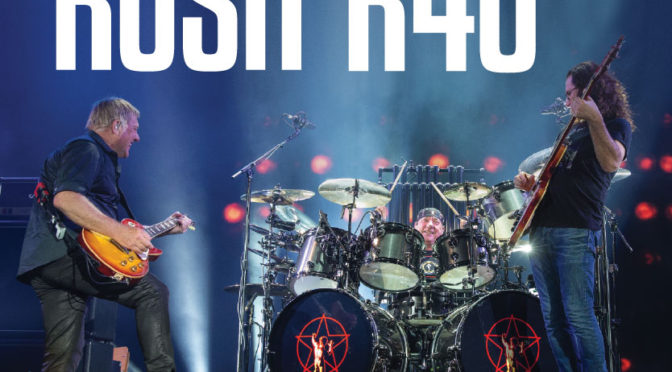by Catherine Gray, Member of Local 149 (Toronto, ON)
Last spring, after a triumphant opening of La Bohème, the Canadian Opera Company (COC) Orchestra musicians found themselves facing a long, difficult summer fighting for their livelihoods and the future of Canadian Opera. When negotiations began on April 18, management wasn’t prepared to discuss finances. In the next meeting, management delivered its proposal: to cut guaranteed services from 120 down to 100, with a resulting 15% reduction in the musicians’ annual compensation.
There had been some warning signs. One of the first things General Director Alexander Neef did when he joined the company in 2008 was reduce the season from seven mainstage operas to six, and performance activity has continued to fall since then. It became clear to the musicians that management viewed unused orchestra guaranteed services as a gigantic eyesore on the company budget sheet.
Although the COC has experienced some financial turbulence, the company has not posted a deficit since opening its new hall in 2006. The endowment performed poorly on the stock market in 2018 and government funding and subscriptions were down, but even in that context, the extent of the cuts demanded from the orchestra was excessive and unjustified. Management wanted to achieve 35% of its savings goals from the orchestra musicians, who make up only 10% of the overall budget.
After a second negotiations meeting, the committee met with the full orchestra to report on management’s proposal—and the thousands of dollars it would cut from musicians’ compensation. The orchestra responded with great support to fight to preserve the guarantee. The musicians also voiced support for rejecting management’s proposal to reduce pay for extras and instead to keep it on par with that of core members.
After several unsuccessful meetings with management, talks came to an impasse. Musicians could not accept a cut to the guarantee; doing so would not only erode incomes, it would encourage the erosion of performances and quality, and ultimately the decline of a major Canadian cultural gem.
The impasse sparked a tangible collective energy to fight cuts to the guarantee, and the musicians began seriously organizing for work action. With the support of Local 149 (Toronto, ON) and in consultation with Randy Whatley of Cypress Media Group and AFM Organizer Alex Wiesendanger, the musicians created pamphlets and buttons to distribute to patrons on opening night of Turandot, and T-shirts in preparation for picketing. There was an outpouring of ideas from musicians of how unused guarantee services could be used to foster greater orchestra involvement in the company, including participation in fundraising campaigns, community engagement and outreach, and educational outreach.
The musicians’ negotiating committee included Co-chairs Janet Anderson and Liz Johnston, Charles Benaroya, Bethany Bergman, and Catherine Gray, assisted by Michael Murray, executive director of Local 149, and counsel Michael Wright of Wright Henry, LLP. Musicians Shelley Brown and Aya Miyagawa also participated as part of a work action committee. The COC orchestra musicians are members of Local 149.
As summer ended and the new season approached, musicians met with the COC Board of Directors and shared their vision—the many ideas from musicians about how the unused guarantee services could be used to better the direction of the company. The musicians also laid the groundwork to become involved in the search for a new general director, as Neef will soon be departing for the Paris Opera. This meeting was pivotal and formed the basis for a relationship that will be critical to nurture.
Shortly after, as rehearsals for Turandot began, the parties proceeded to mediation with the Ontario Ministry of Labour. In a marathon 13.5-hour mediation session on September 25, the musicians finally got the message across the table that cutting the guarantee was not an option, and the parties reached agreement, narrowly averting a work action. Although the musicians made small concessions in overtime, the guarantee and extra musician compensation were preserved, and the musicians even obtained modest wage increases. The new agreement was ratified by musicians on October 1.
The settlement includes an agreement to build relationships and foster collaboration, with added language calling for regular meetings to discuss greater orchestra involvement in the company using the unused guarantee services, and orchestra consultation in the search for the next general director. Musicians believe continuing to strengthen their involvement with the COC and fostering deeper relationships with the board of directors and management will be critical to the future success of the company.
La lutte des musiciens d’orchestre de la Compagnie d’opéra canadienne pour préserver les services garantis et conclure une nouvelle entente
par Catherine Gray, membre de la section locale 149 (Toronto, ON)
Le printemps dernier, après le succès éclatant de La Bohème, les musiciens d’orchestre de la Compagnie d’opéra canadienne (COC) devaient faire face à ce qui s’annonçait être un été difficile et une longue lutte pour l’avenir de leur gagne-pain et de la COC. Au début des négociations, le 18 avril, la direction n’était pas disposée à discuter des aspects financiers. À la séance suivante, elle a déposé son offre : une baisse des services garantis, de 120 à 100, ce qui aurait eu comme résultat une réduction de 15 % de la rémunération annuelle des musiciens.
Il y avait eu des signes annonciateurs de cette tangente. Une des premières décisions du directeur général Alexander Neef à son arrivée en 2008 avait été de réduire le nombre de productions pendant la saison de sept à six. Le nombre de représentations n’a cessé de baisser depuis lors. Pour les musiciens, il était évident que la direction considérait les services garantis non utilisés comme une tache sur le bilan financier de la Compagnie.
Malgré quelques turbulences financières, la COC n’a jamais enregistré de déficit depuis l’ouverture de la nouvelle salle en 2006. Il est vrai que la fondation a connu des résultats médiocres sur le marché en 2018 et que le financement gouvernemental et les abonnements sont à la baisse. Néanmoins, malgré ce contexte difficile, l’ampleur des compressions imposée à l’orchestre était excessive et injustifiée. La direction voulait que l’orchestre absorbe 35 % des réductions de dépenses prévues, et ce, même si celui-ci ne représente que 10 % du budget général d’opération.
À la conclusion de la deuxième séance de négociation, le comité a rencontré l’orchestre pour leur faire part de l’offre du COC – et des baisses prévues de milliers de dollars dans les salaires des musiciens. Les membres ont fortement appuyé une motion visant à conserver les minimums garantis. Les musiciens se sont aussi prononcés contre la proposition de la direction visant à réduire la rémunération des remplaçants, qu’il fallait au contraire s’assurer qu’elle demeure la même que celle des membres réguliers.
Après plusieurs séances infructueuses, les négociations étaient dans une impasse. Il était impensable pour les musiciens d’accepter une réduction des minimums garantis; agir ainsi aurait comme conséquence non seulement une baisse de leurs revenus, mais également une dégradation des prestations, une baisse de la qualité et, à plus long terme, le déclin d’un grand joyau du patrimoine culturel canadien.
Cette impasse dans les négociations a éveillé les consciences de façon tangible chez les membres. Ils ont entrepris de lutter activement contre les coupures touchant les garanties et établi un plan d’action commun à cet égard. Avec le soutien de la section locale 149 (Toronto, ON) et en concertation avec Randy Whatley de Cypress Media Group et l’organisateur syndical Alex Wiesendanger de la FAM, les musiciens ont conçu des dépliants et des macarons, pour distribution aux spectateurs lors de la première de Turandot, ainsi que des T-shirts pour le piquetage. Par ailleurs, les idées ne manquaient pas chez les musiciens sur la façon d’utiliser les services garantis non utilisés afin d’accroître la participation de l’orchestre dans les activités de la COC, dont entre autres une participation aux campagnes de financement, aux initiatives de mobilisation communautaire et aux programmes de sensibilisation.
Le comité de négociation des musiciens était composé de Janet Anderson et Liz Johnston, coprésidentes, Charles Benaroya, Bethany Bergman et Catherine Gray, avec le soutien de Michael Murray, directeur général de la section locale 149, et du conseiller Michael Wright, de Wright Henry, LLP. Les musiciennes Shelley Brown et Aya Miyagawa ont aussi participé aux activités du comité. Les musiciens d’orchestre de la COC sont membres de la section locale 149.
À la fin de l’été, avec le début de la nouvelle saison approchant à grands pas, les musiciens ont eu l’occasion de rencontrer le conseil d’administration de la COC et de faire part de leur vision – leurs nombreuses idées pour utiliser les services garantis non utilisés afin d’améliorer l’orientation de la Compagnie. Les musiciens ont aussi jeté les bases pour assurer leur participation au recrutement du nouveau directeur général; Neef quittant bientôt son poste pour prendre la direction de l’Opéra de Paris. Cette réunion a marqué un tournant et est à l’origine d’une nouvelle relation entre les parties, relation qu’il sera important d’entretenir dans le futur.
Peu après, au moment où commençaient les répétitions pour Turandot, les parties ont convenu de recourir à la médiation auprès du ministère du Travail de l’Ontario. Le 25 septembre, lors d’une séance marathon de médiation qui a duré plus de 13 heures et demie, les musiciens ont finalement réussi à faire comprendre qu’une compression dans les minimums garantis était hors de question. Par la suite, les parties en sont finalement arrivées à une entente, évitant ainsi de justesse le déclenchement de moyens de pression. Même si les musiciens ont fait quelques concessions mineures sur les heures supplémentaires, notons que les services garantis et la rémunération des remplaçants ne sont pas touchés. Les musiciens obtiennent en outre une petite hausse de salaire. La nouvelle entente a été ratifiée par les membres le 1er octobre.
L’accord comprend des dispositions visant à favoriser les relations et à encourager la collaboration, dont certaines clauses prévoyant la tenue de réunions sur une base régulière pour discuter de la possibilité d’une participation accrue de l’orchestre au sein du COC en ayant recours aux services garantis non utilisés et la consultation de l’orchestre dans le cadre du processus de recrutement du nouveau directeur général. Les musiciens estiment que l’augmentation de leur participation dans les activités de la COC et le fait d’entretenir de bonnes relations avec le conseil d’administration et la direction joueront un rôle essentiel dans le succès futur de la Compagnie d’opéra canadienne.




